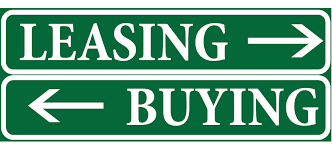
There are some factors and variables, both qualitative and quantitative, that affects a person or firm’s decision either to buy or lease an asset. It is imperative as a lessee (user of an asset) to critically analyse these issues to arrive at a better decision.
The following are some of the qualitative factors that imply an obvious advantage of leasing over buying an asset.
(1) Flexibility and convenience: due to the nature of leasing, lessors (owner of an asset) are able to adapt to the specific needs of lessees (user of an asset), thus making leasing more convenient to the lessees. One area of flexibility and convenience advantage, is the wide range of possible lease payment schedules. A lease payment may be structured on a monthly or even varied in amount and/or timing to suit the cash flow position of the lessee. The lessee can also enjoy swaps and upgrades facilities. All these are not readily available in commercial lending.
(2) Off Balance Sheet Financing: in operating lease (a type of leasing that allows a lessee use an asset for a specific period of time and returns to the owner, and it is usually for a short period of time), from accounting view point, neither the leased asset nor the corresponding lease liability will appear on the face of the lessee’s balance sheet. This tends to give a favourable balance sheet picture in terms of improved profitability ratios such as return on asset (ROA) and other financial ratios.
(3) Bundled Services: other services such as repairs and maintenance, insurance, product warranties, swaps etc can be provided with the lease to offer a full service package. These services may be more convenient and less expensive than if they were separately arranged.
(4) Provision of an alternative in tight capital budget situation: leasing allows additional equipment to be acquired when capital budget for the acquisition of assets have been spent. This is possible because rentals will be paid from operating expense budget as opposed to a capital acquisition budget.
(5) Maintenance of credit lines: if credit lines are used unduly through acquisition of equipment, there might be serious hindrance on the ability of a company to carry out its activities, due to inability of acquire working capital. In this situation, leasing readily fills in the gap as an additional source of finance not otherwise available.
(6) Prevention of salvage difficulties: through leasing, many of the problems associated with the disposal of purchased equipment can be avoided.
(7) Avoidance of dilution of share ownership: leasing may be the only way of acquiring the long-term use of major equipment required by a business without increasing the capital base.
(8) Economic advantage arising from excessive usage: where excessive wear and tear of the asset is envisaged, it might be economical to the lessee to lease such asset. Provided there is no clause in the lease agreement requiring re-imbursement for excessive usage.
Quantitative Analysis
Obviously, the quantitative evaluation of the lease or buy decision, is one of cost minimisation. Whether lease financing or buying is better will depend upon the pattern of cash out flow of each financing method and upon the opportunity cost of funds. A firm must be aware of the several issues affecting the cost components of leasing versus buying before embarking on a final calculation of the cost implication of each option. The firm must obtain correct information on each of these factors to ensure that a thorough analysis is done. Some of the issues that must be put into consideration include:
(1) Cash flow associated with two alternatives. Comparison of such cash flows must be done on an after tax basis to include possible tax benefits in the analysis.
(2) Capital allowance structure for the equipment under consideration
(3) Appropriate discount factor to reflect the cost of any residual value payment associated with the lease transaction
(4) Corporation tax rates
(5) Closing, documentation, origination fees, security deposit etc.
(6) Details of lease/loan contract must be fully understood, in order to equate the numerous variables impacting the decision. The terms of the lease should match that of the loans. For example, skip, step-up or step down payments as well as the duration should be the same.
LEASE AN ASSET TODAY…Further details on how to, contact ELAN today for any of your asset needs…08023176691, 08023179048, info@elannigeria.org for further engagements

